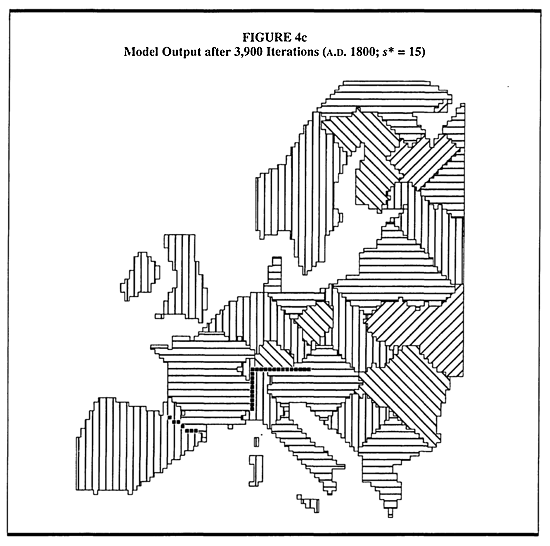History and Math
by Krešo Josić
Today, let's see what mathematics tells us about history. The University of Houston Mathematics Department presents this program about the machines that make our civilization run, and the people whose ingenuity created them.
In the Cyberiad the great Polish science fiction writer, Stanislaw Lem, describes the voyages of two universe faring adventurers. The book is lighthearted, and the adventurers find their way in and out of trouble by predicting the future using mathematical models.
Although these may seem like far-fetched fantasies, we use math to predict the future every day, and we have been doing so for a very long time. Newton's Laws can be used to predict the future. Our ability to predict the future enabled us to land on the Moon. Indeed, much of science is concerned with developing better models of the world, precisely in order to better predict the future.
Your brain is also using its own models of the world to continuously make predictions: When somebody throws a ball at you, your hand moves to the place where the ball will be a fraction of the second in the future. Your brain just used a model of the world to predict the future.
But can we model historical events, like Lem suggested? A recent branch of mathematics pioneered by Peter Turchin suggests that we may. Cliodynamics — named after Clio, the muse of history — uses mathematical models to explain the common principles behind large-scale historical events. It aims to explain the rise and fall of empires, and the cycles of war and peace.
A good mathematical model strips away all unnecessary details. The trick is to know what essential features need to be kept. To model the rise and fall of empires, we could try to capture the following essential dynamics: Success in war leads to an expansion in territory size. In turn, a larger territory leads to more resources, which give an advantage in future wars. But a large empire has a longer border to defend, and big territories are more difficult to govern.
Marc Artzrouni and John Komlos simulated the co-evolution of computer generated 'states' driven by such historical forces. Virtual states on their computers expanded, contracted and disappeared on a Europe shaped map. Surprisingly, a number of simulations resulted in a configuration that resembles that of modern Europe: Spain, Italy and Britain are clearly visible.

Cliodynamics has its roots in population biology. Population biologists frequently use mathematical models to describe populations of plants and animals. Cliodynamicists implicitly assume that similar mathematical models can describe changes in human societies over time. Will we be able to adapt the concepts that have been used to study foxes and rabbits to understand human societies? Or will the rules that govern human history have to be written in a completely different language? This debate will occupy cliodynamics for a long time. And it is essential that it does ' it is such debates that push science forward.
This is Krešo Josić, at the University of Houston, where we're interested in the way inventive minds work.
If you enjoy off-beat science fiction, I recommend Stanislaw Lem's Cyberiad. The translation is not perfect, but Lem's wit and great ideas do shine through. Asimov's Foundation series is, perhaps, the best known science fiction work based on the idea that mathematical models can be used to predict the future on the large scale.
A readable introduction to cliodynamics is P. Turchin's book Historical Dynamics. The article 'The Formation of the European State System: a 'Predatory' Model' by M. Artzrouni and J. Komlos appeared in Historical Methods, vol. 29, pp. 26-134 (1996).
A recent article in Nature, vol. 462, p. 911, discusses the possibility of modeling terrorist attacks. It shows that there are universal trends in the statistics of terrorist attacks that hold across many different countries, and proposes a model to explain it. Of course, all such models and explanations should be viewed with a good deal of skepticism.
Making exact predictions about historical events will likely be impossible. Episode 1541 discusses this point.